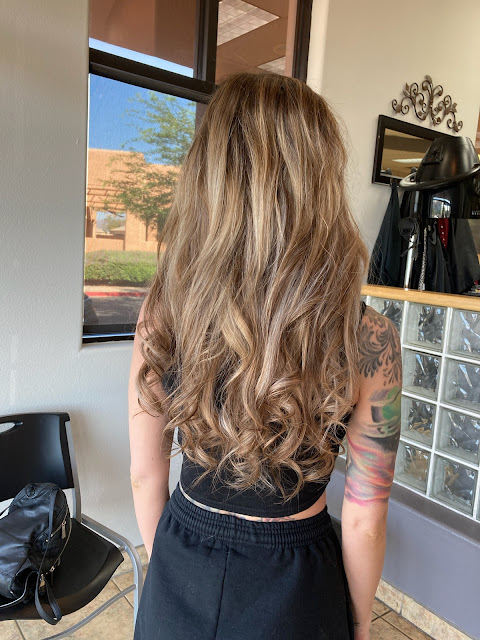Pros & Cons of I Tip Hair Extensions
Hair extensions have come a long way since Cleopatra's time. Archaeologists found evidence that Egyptians were using extensions made of real hair and sheep's wool, attaching them using resin and beeswax. The use of extensions continued throughout history.
By the 1900s, "clip-in" extensions became popular because of their ease of use. In the 1980s, the innovative hairstylist, Simon Forbes, developed "monofibre" extensions attached using hot wax. That paved the way for U-tip extensions that are fused to your hair with heated keratin.
Then along came I-tips, also referred to shoelace tips and cold fusion. As opposed to the U-tip extensions that require heat, I-tip extensions are attached using micro or Nano beads. Small strands of your hair are pulled through a small metal loop in the extension base and clipped together with the beads.
Pros of I-Tips
I-tips are work well for any hair type, but they're particularly beneficial for fine, thin hair. They are very light-weight and won't put a strain on delicate tresses, and come in lengths from 6 inches up to 30 inches.
Most people find them very comfortable, too. Since they're held on by such tiny micro-beads, you won't even know they're there.
They come in different textures, as well. From the traditional straight to body and/or loose waves, deep or kinky curls, to even funmi or yaki. With so many textures to choose from, it's easy to find the most natural-looking strands for your hair type.
Another wonderful thing about I-tips is that they're reusable and long-lasting (usually at least six to eight months).
Additionally, they are considered "semi-permanent," so you don't have to spend time each day applying them on and taking them off (like clip-ons). They're great for busy people!
Want to add highlights, lowlights or wild colors? You can do that using I-tips without subjecting your hair to harsh chemicals.
Last, but not least, they're affordable. The longest 30-inch extensions, which extend to the middle of your back, average between $45-$55. And, you can attach them yourself (saving a lot of money instead of going to a salon).
Cons of I-Tips
I-tips require special tools (beads and pliers) and there's a rather steep learning curve at first. That said, when you don't know exactly what you're doing, it's easy to damage the extension ends, rendering them useless. Accordingly, we recommend you have someone help you the first time or two until you get the hang of it. Online tutorials are a great resource, too.
Also, the initial application is rather time-consuming. Expect your first application to take at least four to six hours, whereas a professional stylist only takes two to three.
In addition, as with any hair extensions, as your hair grows, you'll need to move the extensions closer to your scalp. Keep in mind moving them up isn't as difficult as applying them.
Caring for your hair with the extensions is a bit more complicated, too. You'll need to carefully read the ingredients in everything you might want to apply your newly enhanced mane. It is inadvisable to use anything with sulfates or alcohol, as well as hair sprays, gels or waxes.
Finally, never brush your enhanced hair from the roots. You'll want to start from the bottom and work your way up. Also, make sure your tresses are at least 90% dry before brushing.
Summary
Hair extensions are a great way to lengthen and volumize your hair. Just keep in mind the pros and cons mentioned above and give yourself time to learn how to apply and care for them. Enjoy your new look!


Comments
Post a Comment